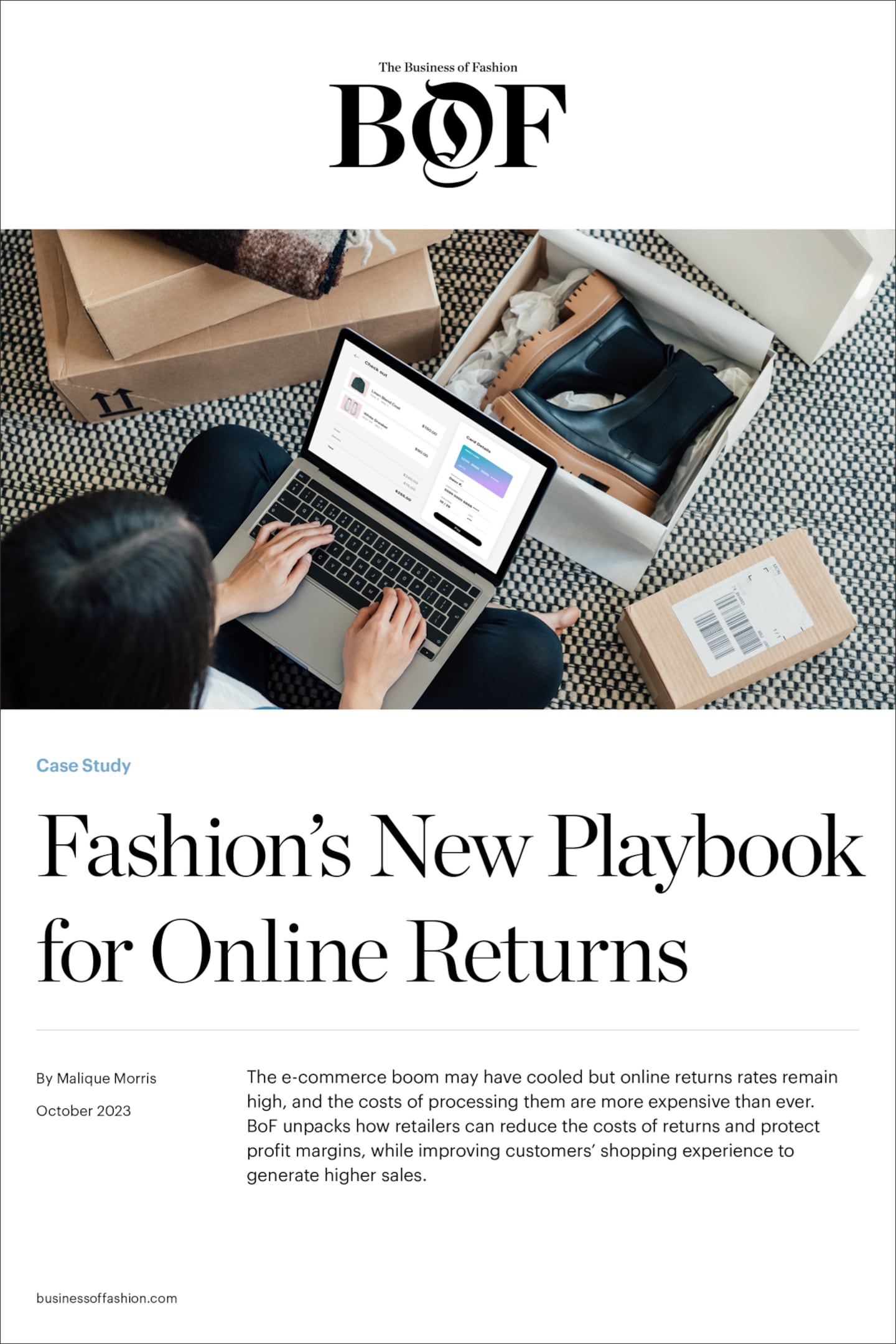
The Business of Fashion
Agenda-setting intelligence, analysis and advice for the global fashion community.

Agenda-setting intelligence, analysis and advice for the global fashion community.

When Amazon first introduced free two-day shipping and free returns for members of its Prime subscription service in 2005, it reset consumers’ expectations for how they shopped online. Suddenly, brands and retailers of all sizes felt compelled to allow customers to send back unwanted items free of charge, or risk losing them to the ultra-convenient “everything store.”
Free returns were always something of a misnomer, however. Retailers still had to pay for shipping, plus the not insignificant expense of sorting through returns to figure out which items could be resold, and what to do with the rest. Many companies grumbled about the costs and headaches associated with unlimited free returns, but felt their hands were tied.
Those costs rose steadily along with e-commerce volumes, but spiked during the Covid-19 pandemic, when shoppers moved online en masse. In 2021, the percentage of global retail sales completed online jumped to 18 percent from 14 percent in 2019, according to Insider Intelligence. Free returns encouraged costly consumer behaviour, most notably the act of buying the same garment in multiple sizes and keeping only the one that fits. Returns accounted for 17 percent of e-commerce sales in 2021 in the US, according to the National Retail Federation, up from 11 percent in 2020. At the same time, global supply chain snarls triggered a spike in shipping costs, further penalising retailers for their generosity.
The pandemic e-commerce boom quickly faded, but return rates did not (the NRF found they held steady at 17 percent from 2021 to 2022). The costs of “free” returns are also being driven higher, first by the pandemic’s logistical pressures, which caused shipping rates to increase, and then by inflation.
ADVERTISEMENT
But returns are often high on the cost-cutting list; once seen as unavoidable, they are increasingly viewed as an expense to be managed like any other.
A growing number of companies have started charging customers for returns; in April 2022, for instance, Zara imposed a £2 fee in the UK, and a $4 fee in the US later that year for online orders that are returned by mail (items returned to stores are still free). In June 2023, H&M followed suit by introducing a £2 fee for customers in the UK who are not part of its membership programme to ship back online orders.
Even Amazon is tweaking its policies. For years, the e-commerce giant has partnered with retailers such as Kohl’s and Staples in the US to encourage customers to bring returns to a central physical location themselves. In April 2023, the company went a step further, introducing a $1 fee for some customers who take their Amazon packages to a UPS store when there is an (Amazon-owned) Whole Foods grocery store close by.
Experts say these tactics should help reduce returns costs in the short term, but that it’s too early to tell if the savings they make will outweigh any negative impact on sales.
An effective returns policy goes beyond the binary of whether to charge customers for the service, however. The retailers that are charging for returns are often pairing those fees with incentives to keep shoppers coming back. Others are finding alternatives to drive down expenses associated with returns without hurting their conversion rates. A wave of start-ups are eager to help brands implement their optimal strategy, whether that involves offering customers credits towards new items in place of full refunds, or facilitating at-home pick-ups.
Ultimately, experts say retailers should strive to create returns management systems that help them attract customers who know exactly what types of goods work best for them before they make a purchase. According to Tony Sciarrotta, executive director of the Reverse Logistics Association, a global trade association, one way is to adopt what he calls the “carrot approach,” where retailers give customers perks that influence them to streamline what they buy.
“If you buy this and we make sure it’s the right size and you don’t return it, we’ll give you a discount,” Sciarrotta said. “Encouraging you to buy what you really need.”
This case study lays out how brands and retailers can identify solutions that best align with their sales models, product categories and supply chains, with executive and other expert insight from a range of retailers.
Luggage brand Monos, for example, raises the curtain on the strategy behind why it charges for returns outright but has added features to retain its customers, while jewellery start-up Ana Luisa has adopted similar selling tools to transform returns into a sales growth driver. Luxury e-tailer Mytheresa describes how it developed technology in-house to find higher-spending customers, who shop more frequently and return less, and offer them better returns options. And finally our case study explores why retailer Revolve has no plans to end free returns, but is restructuring its logistics to cut costs and improve outbound shipping speeds. The Latin America-based e-marketplace Mercado Libre also won’t charge for returns but has deployed a different strategy, including adding more physical drop-off sites for returned items, thus expanding its customer touchpoints.

Designer brands including Gucci and Anya Hindmarch have been left millions of pounds out of pocket and some customers will not get refunds after the online fashion site collapsed owing more than £210m last month.
Antitrust enforcers said Tapestry’s acquisition of Capri would raise prices on handbags and accessories in the affordable luxury sector, harming consumers.
As a push to maximise sales of its popular Samba model starts to weigh on its desirability, the German sportswear giant is betting on other retro sneaker styles to tap surging demand for the 1980s ‘Terrace’ look. But fashion cycles come and go, cautions Andrea Felsted.
The rental platform saw its stock soar last week after predicting it would hit a key profitability metric this year. A new marketing push and more robust inventory are the key to unlocking elusive growth, CEO Jenn Hyman tells BoF.